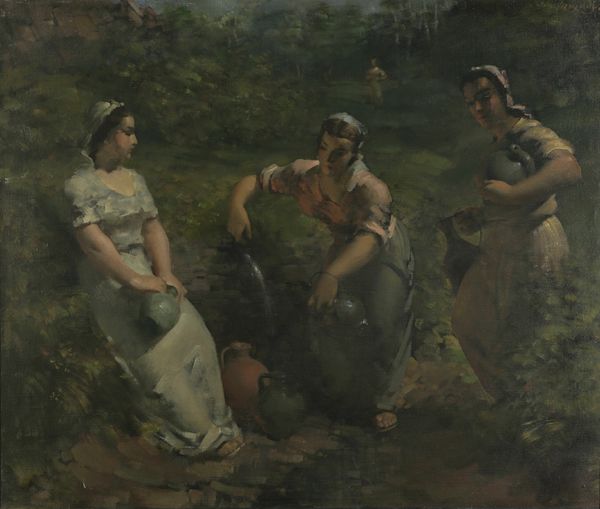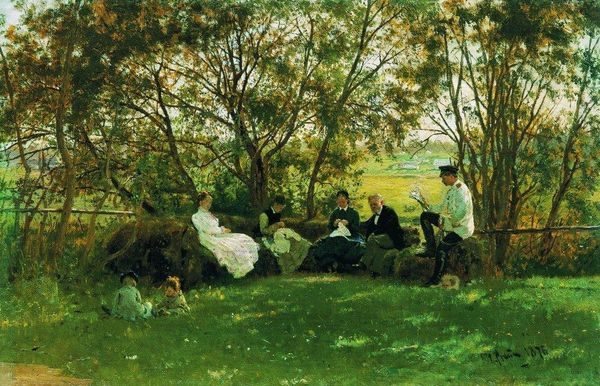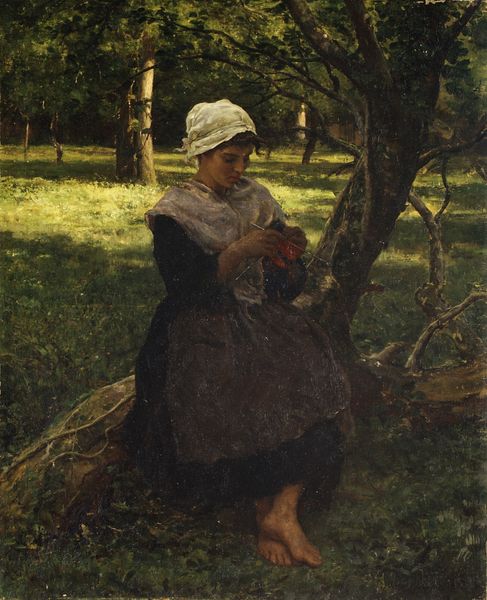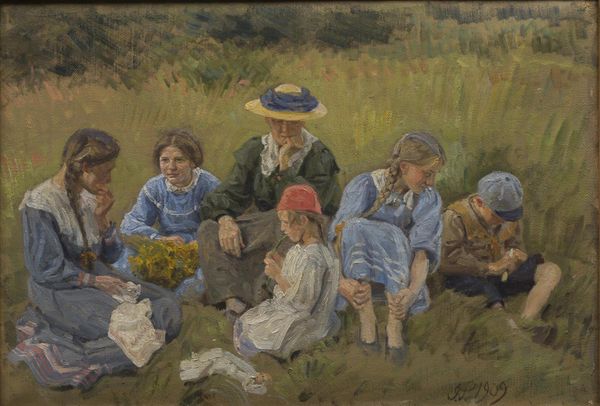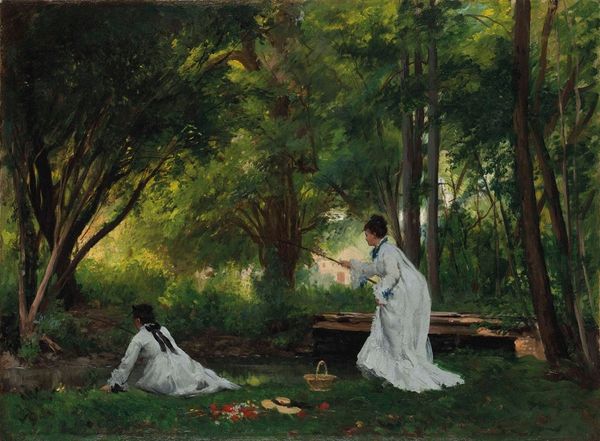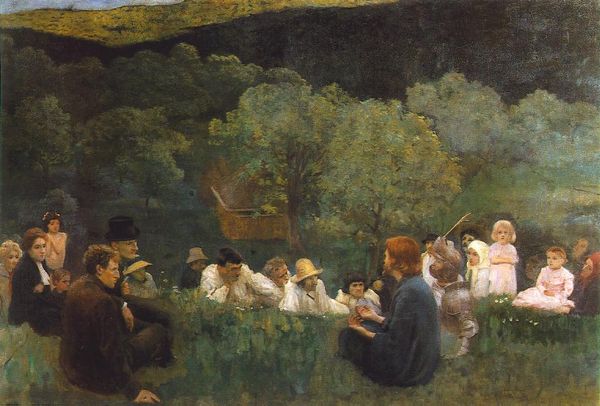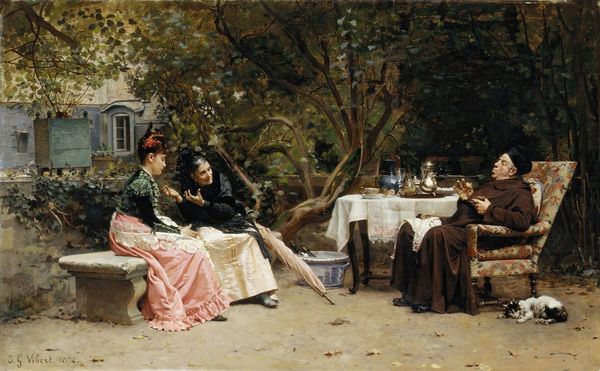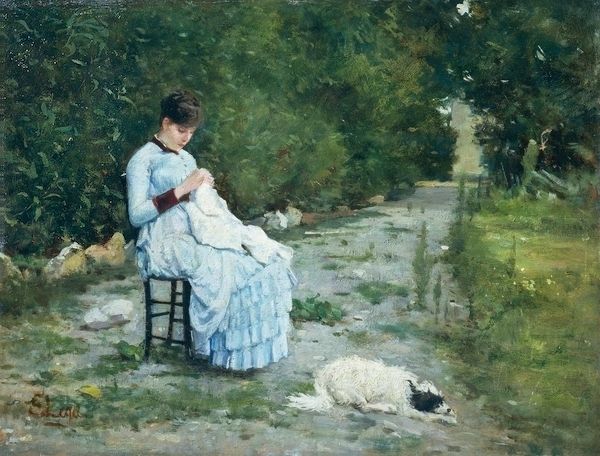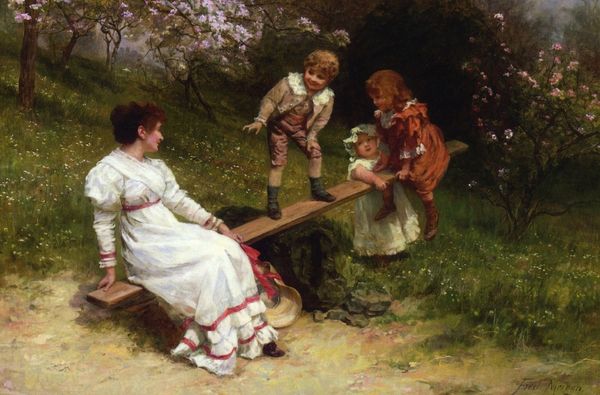
Family reunion in Bourron-Marlotte (Théodore de Banville in the forest of Fontainebleau) 1857
0:00
0:00
julesbreton
Petit Palais, Paris, France
Dimensions: 39.4 x 47.3 cm
Copyright: Public domain
Curator: Jules Breton's “Family reunion in Bourron-Marlotte (Théodore de Banville in the forest of Fontainebleau)” painted in 1857 offers a glimpse into the lives of 19th-century artists and writers in their natural environment, using oil on canvas with visible impasto. What are your first thoughts? Editor: It’s a rather intimate, informal gathering. The subdued palette gives the scene a sense of quiet domesticity set against the rougher textures of the Fontainebleau forest. Curator: The work invites us to consider the interplay between artistic circles and domesticity. The inclusion of Théodore de Banville, the celebrated poet, anchors this painting within a specific socio-cultural context. Notice how Breton blurs the lines between portraiture, landscape, and genre painting. How does this gathering challenge the traditional definitions of family and community? Editor: I see how the artist balances form and feeling. The way Breton has captured the nuances of light and texture of the fabric. But do these techniques successfully transmit anything beyond the domestic and social status? Is this supposed realism or Romantic idealization? Curator: Breton certainly aimed for a balance between the ideal and real. However, one cannot overlook the potential for Romanticizing the role of artists in society while subtly reinforcing gender roles. Observe how the women are occupied with domestic tasks, knitting, childcare; contrasting the man, positioned as a figure of contemplation and perhaps intellectual leadership. This imagery aligns with broader patterns in art history where women's roles were often confined to the domestic sphere. Editor: That reading might be justified if the painter offered more linear distinction of roles here. The impasto blurs those lines just enough for one to consider more the painter’s use of form than the social content—though both exist. Breton employs strong compositional geometries to anchor the figures—see how the implied diagonals created by the tree trunk and reclining man are softened by rounded forms of family gathered near them. The chromatic tensions make a stable image through such devices. Curator: I concede your analysis of form makes way for a reading that tempers my emphasis on gender disparity in cultural spheres, although its influence persists to some degree in our readings. Thank you. Editor: Agreed, it's a dance of form and content where technique carries weight.
Comments
No comments
Be the first to comment and join the conversation on the ultimate creative platform.
